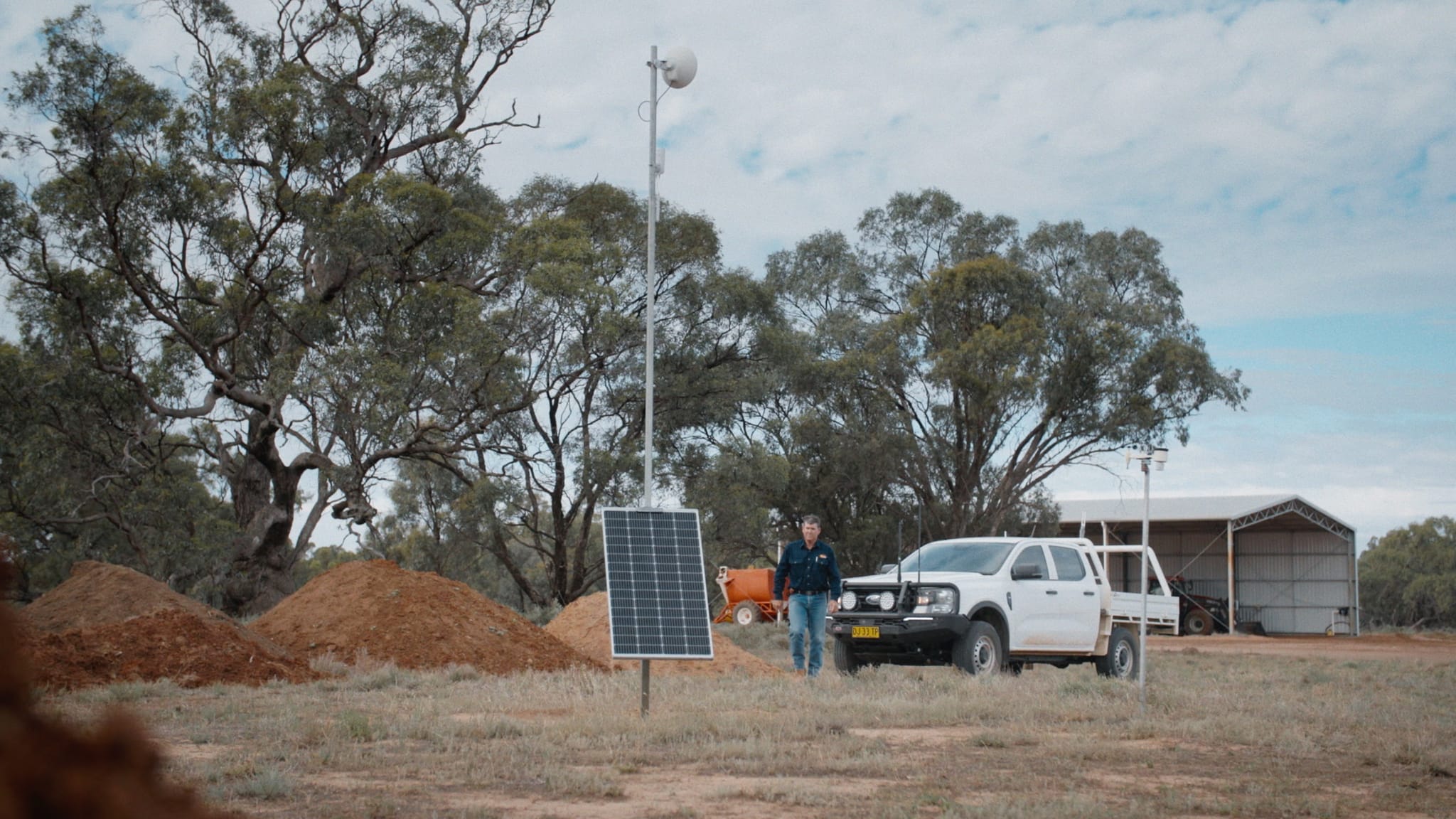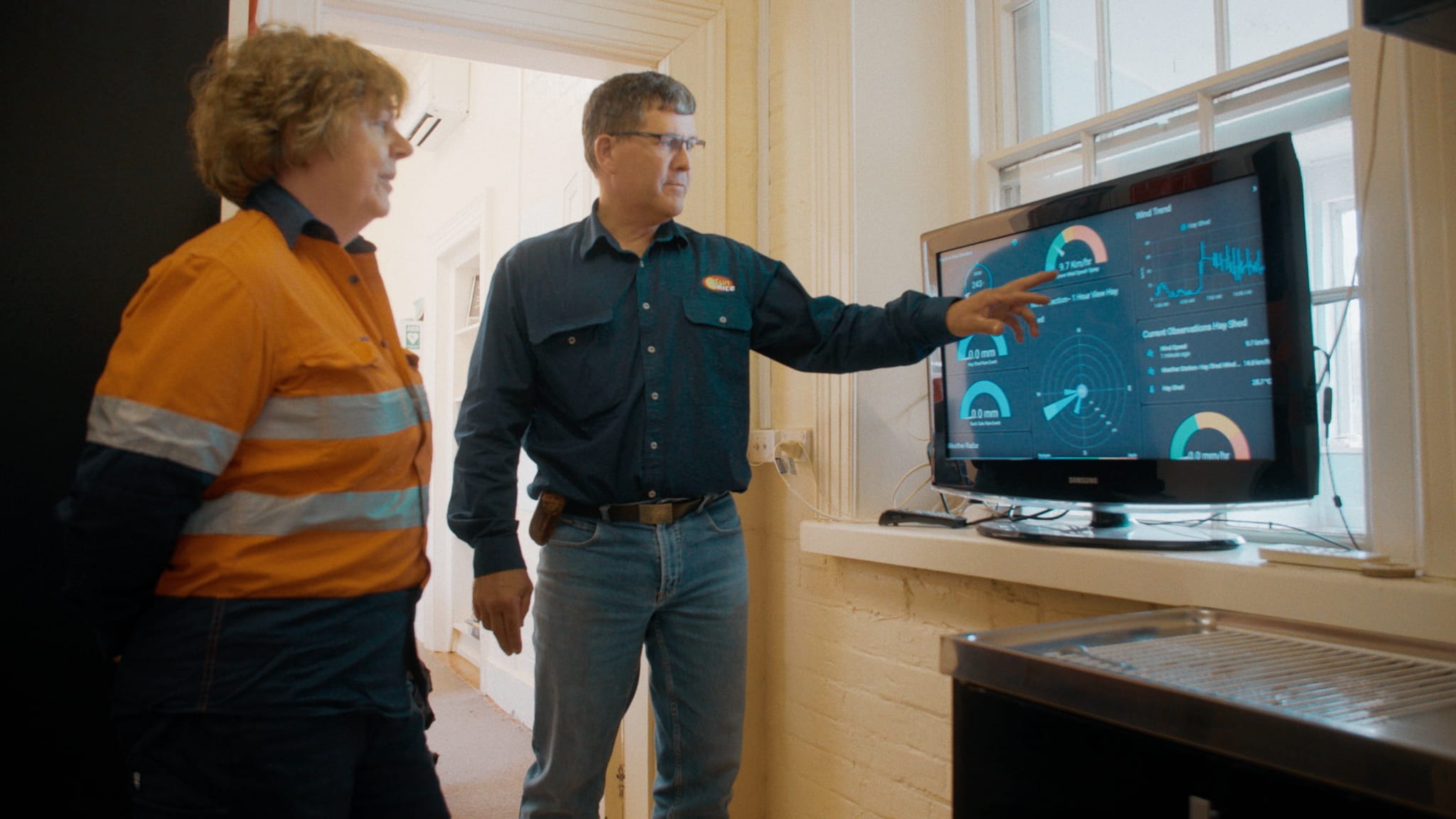Creating Common Ground at evokeAG. 2025
The next edition of evokeAG. will be held on 18-19 February 2025 in Brisbane, Queensland. evokeAG. has evolved into a premier event for the agrifood...
 GLOBAL INNOVATION NETWORKS / News story
GLOBAL INNOVATION NETWORKS / News story Finding connectivity solutions which suit the unique needs and geography of Australian farms is a significant challenge for regional Australia and continues to contribute to hesitancy of producers to adopt new technologies on-farm.
It’s a challenge Rice Research Australia took head on, developing a customised Wi-Fi solution for historic rice research station “Old Coree” at Jerilderie in New South Wales – ultimately improving its water use efficiency and safety in the rice industry.
Rice Research Australia Manager, Peter McDonnell, said while other industry projects have focused on automation or smart sensing devices, those things all rely on connectivity and for many growers, there’s still a gap between commercial solutions and what’s practical and cost effective on-farm.
“There’s no point having cameras and smart sensing devices if they can’t talk to the internet,” said Peter.
“It’s easy to say, go and plug it into your Wi-Fi network, but what if your farm is 10 kilometres long and five kilometres wide and you don’t have Wi-Fi everywhere? How do you get that signal out and how do you make that practical?
“We’ve looked at rolling out a Wi-Fi network across the farm here at Old Coree to enable the internet of things to happen; so weather stations, cameras, smart sensing devices and automated irrigation.
“I’m not a Wi-Fi engineer or a network engineer, so a lot of learning has happened and talking to people who do know what they’re doing.”
During the project’s design phase, several vendors of connectivity solutions were consulted. After reviewing the complexity and flexibility of the systems on offer, establishing a mobile Wi-Fi network was chosen as the preferred solution.
The next challenge was understanding what hardware components would be required for a local network, given the difficult environment at the research station.
Thick vegetation, sandy hills, long distances and limited power supply proved too difficult for some vendors and sent Peter and his team on a steep learning curve to find a bespoke solution.
He settled on using Starlink infrastructure which was based at the property’s homestead, three kilometres from the paddocks, and bouncing the signal across the phone using mobile repeater stations.
“Basically it becomes a wireless cable through the air,” said Peter.
“You take Wi-Fi from your house or your shed, wherever your Starlink may be mounted and push that down to the back of the farm.
“Then it’s a matter of just distributing that across the farm with a number of repeaters to give you access where you need it and some hotspots.”

A 60 tonne crane was needed to install tower-based components linking the office and a remote pump station, but Peter found creative solutions to enable other elements of the network, including solar powered repeater stations, to be mobile.
“We took a 44 gallon drum, cut it and filled it with concrete, put some skids underneath it so we could lift it with a forklift and we can move those repeaters around the farm depending on where we’re running our crops for that year,” said Peter.
“It’s all mobile and movable and that’s to reduce cost and keep it efficient.”
The rollout of a reliable Wi-Fi network at “Old Coree” has resulted in a wide range of productivity and safety benefits, with the most significant changes seen in the area of automated irrigation.
“The most important piece of equipment is our actuators that control our irrigation infrastructure and this allows us to remotely control our irrigation,” said Peter.
“The use of the automation technology has improved our establishment, where we can precisely control our water depth and timing.
“When a rice crop is established on our second flush, we can actually drown the rice and the automation has allowed us to really manage that water to the best of our ability.”
The Wi-Fi network has also provided mobile phone coverage in areas which had been blackspots and reduced the need for staff to drive to and from the farm at night to during peak irrigation periods.

“Across all agricultural sectors, this technology could improve water use efficiency, it would improve our lifestyles being on a farm and the economic outcomes would flow on,” said Peter.
“The commercial avenues for this kind of connectivity solution are difficult. Service providers struggle to deliver this type of technology on a commercial scale, so we do need to make it adoptable by growers.”
For more information about this project and other connectivity projects here.
For information on connectivity options, assistance with technology choices and resources like guides and tech tips visit regionaltechhub.org.au
Project Lead: Rice Research Australia
PRO-017534
Grower: Peter McDonnell
Location: “Old Coree” Jerilderie, New South Wales.
Crops grown: Rice
Average annual rainfall: 376mm
Project: Completing the connectivity map
Technology category: Connectivity (WiFi)